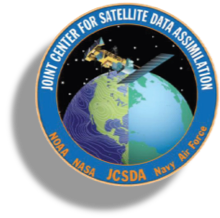Article by Katherine Shanahan, JCSDA Program Specialist
After hearing NOAA’s 2020 proposed budget earlier this year, it was made clear that the United States is behind when it comes to weather forecasting. Among other things, efficient weather forecasting is crucial for protecting lives and predicting natural disasters such as hurricanes. Climate change continues to increase occurrences of disruptive weather events, making the need for superior forecasting critical.
Why is the United States seemingly so behind? The most effective models tend to be unified, bringing together skills found in the public, private, and academic sectors. Currently, all of these sectors within the United States are working separately on their own research and contributing to individualized weather prediction models. This uncoordinated approach leads to fragmented understanding instead of a strong, unified global model that leverages expertise from all available sectors. The Earth Prediction Innovation Center will provide the United States with an opportunity to reclaim leadership in global weather prediction through the creation of a single community-driven global modeling system, while also providing a necessary space for further developing specialized modeling systems (e.g., rainfall prediction).
On Wednesday, November 20, the House of Representatives Committee on Science, Space, and Technology, Environmental Subcommittee heard “A Task of EPIC Proportions: Reclaiming U.S. Leadership in Weather Modeling and Prediction.” The purpose of this hearing was to suss out the long-term goals of EPIC, including how each sector’s expertise would help these goals become realized.
JCSDA core team members gather in the conference room to watch the testimony at UCAR on Wednesday, November 20, 2020. (Photo: K. Shanahan)
The Director of JCSDA, Thomas Auligné, was invited to testify as an expert in data assimilation and research to operations, coming from a background built from experience in both academia and weather prediction centers. Due to his familiarity with the structure, operations, and goals of the European Centre for Medium-Range Weather Forecasting (ECMWF), Dr. Auligné has identified four important factors involved in the creation of an effective global modeling system. These factors include: a) a clear, synthesized vision amongst contributors, b) an emphasis on collaborative innovation, c) a dedication to attracting and maintaining world-class staff, and d) director accountability.
The Joint Center for Satellite Data Assimilation is already employing these four keys to success, which is why it is a Center of Excellence well on its way to becoming a world leader in data assimilation for environmental analysis and prediction. To change the course of weather prediction in the United States, EPIC will need to be a result-oriented center hosted by a trusted partner that engages all sectors internally and externally to support a unified vision.
Watch Tom’s testimony here (skip to 27 mins, 35 seconds).

